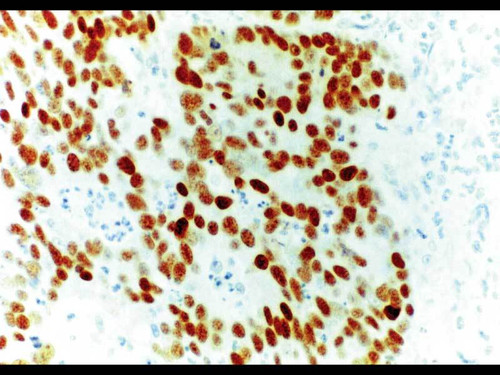At first, p53 was found not as a tumor suppressor gene product but as a cell protein of 53kDa that bind with the large T antigen of DNA type tumor virus SV40. Though at that time p53 was considered to be an oncogene because p53 has a transforming activity, afterwards, it has been reported that a normal p53 gene (wild type) functions as a tumor suppressor gene and the mutation type has a transforming activity. Moreover, it has been reported that p53 is a cause gene of Li-Fraumeni syndrome which causes various cancers genetically, and it is considered that abnormality of the p53 gene (mutation type) is deeply involved in canceration because the mutations of p53 are widely and frequently appeared in nonhereditary tumors as well. Additionally, it is thought that p53 stops cell cycle for DNA reparation or causes apoptosis in order not to transmit a damaged genetic code in response to DNA damage by radiation or medicine, etc. Biochemically, p53 acts as a transcription factor that works in the form of tetramer (it is formed by the interaction of dimers that combined in C-end area), and binds to specific base sequence and then activate the transcription. GADD45, MDM2, MCK, p21/WAF, and cyclin G genes, etc. are clarified as targets. For research use only, not for use in diagnostic procedures.
- application:
- IHC
- Catalog number:
- 10041
- clone:
- Bp53-12
- concentration:
- Please see datasheet
- Datasheet:
- formulation:
- Lyophilized product from 1% BSA in PBS containing 0.05% NaN3
- immunogen:
- Recombinant Human p53
- isotype:
- IgG2a
- notes:
- For research use only, not for use in diagnostic procedures.
The datasheet for this product (see above) is intended to serve as an example only. Please refer to the datasheet provided with the antibody for precise details. - Other names:
- Please see datasheet
- Protocol:
- size:
- 500 µg
- storage:
- Lyophilized product, 5 years at 2 - 8 °C; Solution, 2 years at -20 °C
- Species:
- Human
- Host:
- Mouse







